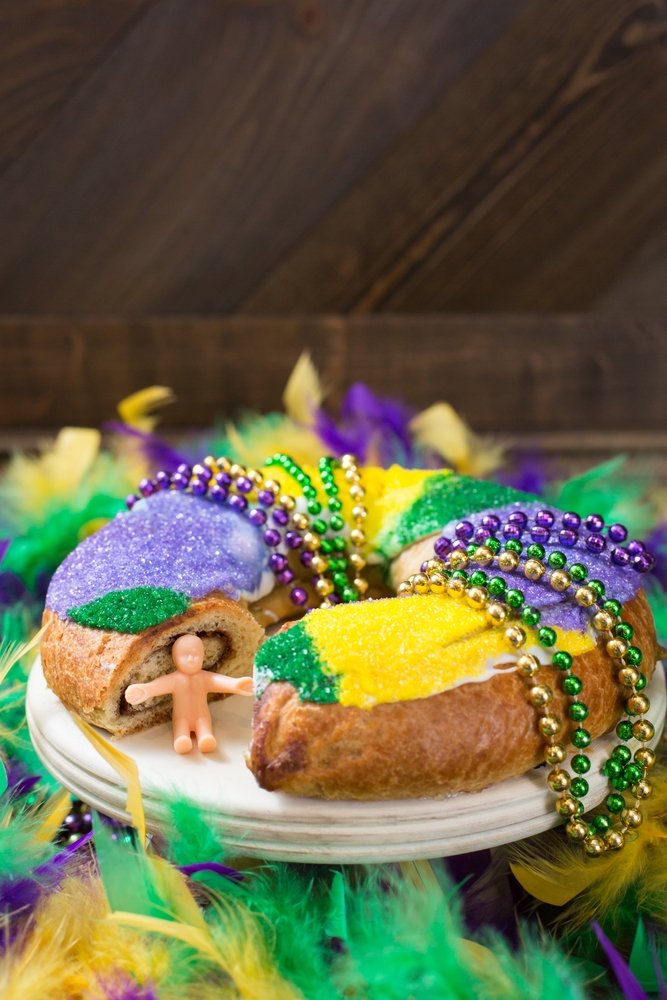Day 0: Today Mardi Gras... Tomorrow Lent
Do you celebrate Mardi Gras?
Do you celebrate Mardi Gras? I’m kind of a “two-percenter.” I have some beads, feather boas, and a couple of masks for fun… just in case the mood or the invitation strikes! Today, some of us feast on king cake and wear purple, gold, and green beads. Tomorrow, we begin the slow, attentive journey through Lent to Easter.
It wasn’t until recently that I began to engage in the practices of Lent and discover the fun of Mardi Gras, and I’ve learned a few things.
Sometime in the 4th Century, Christians began marking the 40 days leading up to Easter as a time of fasting, repentance, prayer, and giving to the poor, which became known as Lent. The word Lent comes from an Old English word which means “lengthening of days” or “springtime.” For many centuries, Christians (except for the very vulnerable) fasted all day until after sundown for the 40 days of Lent, and their meal was restricted mostly to vegetables, bread, and fish. These traditions shifted somewhat over the centuries, and people eventually began breaking the fast as early as noon. At some point in the 17th Century, in anticipation of the stringent fasts of Lent, people would spend days or weeks ahead of Lent, gorging themselves and generally having raucous parties. These parties were not condoned by general culture and were often shut down. In the 19th Century, a few secret societies began sponsoring “legitimized” parties ahead of Lent, complete with masquerades and balls, culminating in the grand finale parade and ball on the Tuesday before Ash Wednesday, and Mardi Gras was born!
Mardi Gras which, literally, means “Fat Tuesday” in French, became the designated day to clear out all the “fat” and deliciousness in the house so as not to tempt anyone away from the simpler food required for the 40 days of a Lenten fast. Well… maybe we need Mardi Gras more than once a year!
What about that king cake? King cake, a circular, braided brioche with cream cheese filling and purple, green, and yellow frosting and sprinkles is traditionally eaten during the season of Epiphany, which begins on January 6, the day we celebrate the arrival of the magi to visit the child Jesus. The last day to eat king cake is Mardi Gras, and tradition says whoever finds the plastic baby in their slice of cake has gained favor (whatever that means!) and must host the Mardi Gras party the next year. The colors of the beads, boas, and frosting have come to symbolize power (gold), faith (green), and justice (purple).
Even though I didn’t grow up celebrating Mardi Gras or practicing a Lenten fast, I have come to appreciate the rhythm of feasting and fasting over the past few decades as I’ve leaned into the tradition of Lent. Even the vines teach us about the cycles of feasting and fasting! Grapes, filled with juice, are eventually harvested and the vine moves into dormancy.
I like to think of Lent as that time of year when I slow down and open myself to a deeper, fuller relationship with the God of the Universe. Sometimes that means giving up or detaching from something that has a grip on my soul, which has kept me distanced from God. Sometimes it means adding on a spiritual practice that will help shape my soul and move me towards God. It’s a time of renewal, a time of growth, a time to inspire greater attachment to the life of the Vine, a time to become more alive to the Spirit.
Even if your spirituality doesn’t describe God in the way Christians describe God, you may find these mindful meditations to be both refreshing and thought-provoking.
If you decide to join us on the journey through Lent, thank you! Don’t worry if you miss a day or a few as you read… It's okay. The meditations are meant to give you an organic framework for intentional inner growth and connection to Jesus. They’re not meant to be rigid or judgmental.
Oh! And, by the way, if you’ve ever counted the days between Ash Wednesday and Easter, you’ll find there are more than 40 days. Yep, it’s true. Sundays are meant to be feast days! On Sundays during Lent, we experience the joy and freedom of breaking a fast, a foreshadowing of the freedom and joy of Resurrection. There will be no meditations sent on the six Sundays of Lent.
Thank you for reading along during Lent. I pray that God will use Lent Meditations: 40 Days in the Vineyard to bring renewal and light to your soul. Feel free to share with others who may appreciate the journey as well.

